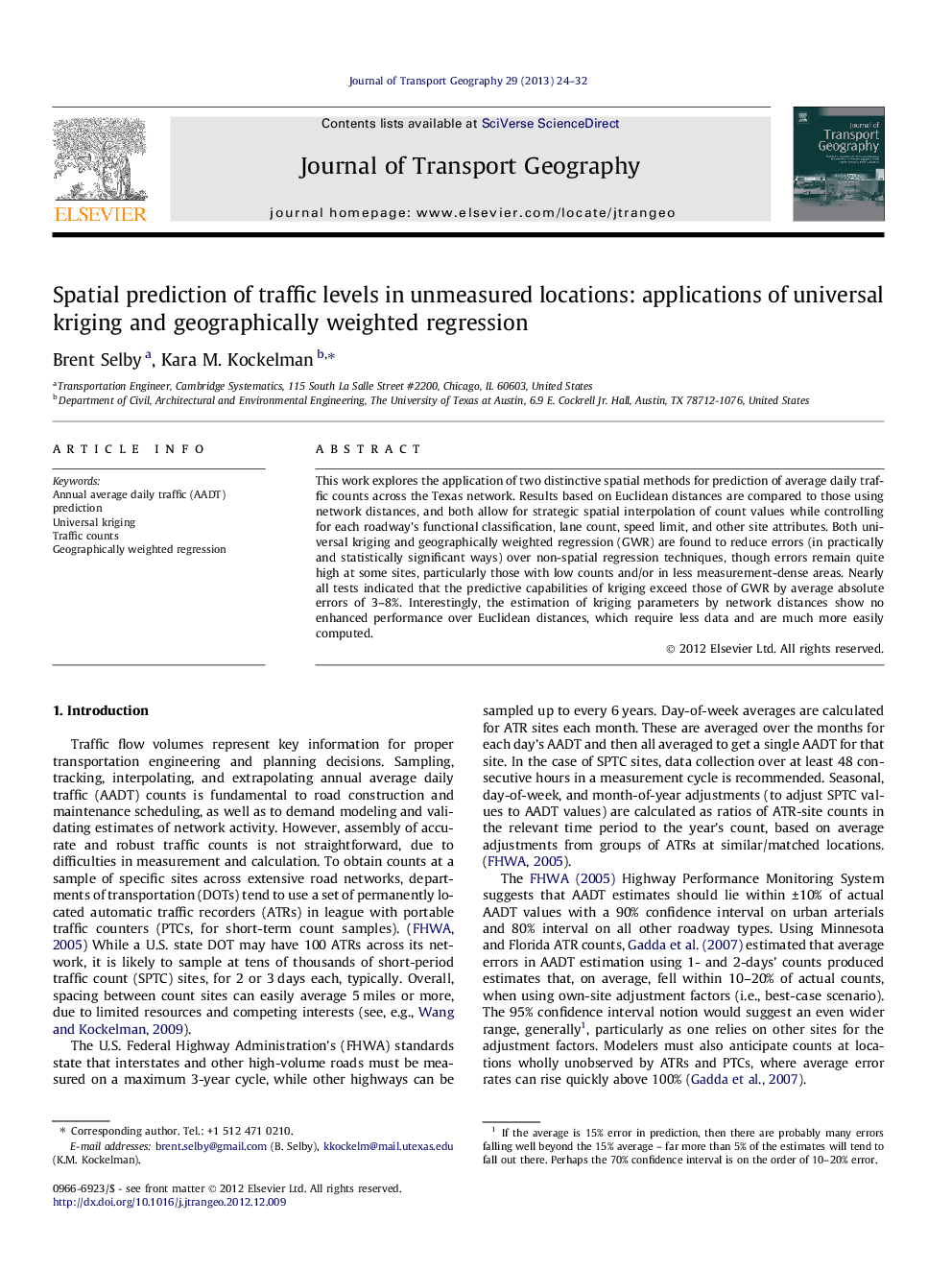| Article ID | Journal | Published Year | Pages | File Type |
|---|---|---|---|---|
| 1059225 | Journal of Transport Geography | 2013 | 9 Pages |
This work explores the application of two distinctive spatial methods for prediction of average daily traffic counts across the Texas network. Results based on Euclidean distances are compared to those using network distances, and both allow for strategic spatial interpolation of count values while controlling for each roadway’s functional classification, lane count, speed limit, and other site attributes. Both universal kriging and geographically weighted regression (GWR) are found to reduce errors (in practically and statistically significant ways) over non-spatial regression techniques, though errors remain quite high at some sites, particularly those with low counts and/or in less measurement-dense areas. Nearly all tests indicated that the predictive capabilities of kriging exceed those of GWR by average absolute errors of 3–8%. Interestingly, the estimation of kriging parameters by network distances show no enhanced performance over Euclidean distances, which require less data and are much more easily computed.
► Universal kriging predicts traffic counts at intermediate (uncounted) locations. ► Network-distance-based predictions are compared to those using Euclidean distances. ► Universal kriging shows a small improvement over Geographically Weighted Regressions. ► Use of network distances (versus Euclidean distances) confers no clear advantage. ► Results strongly support the use of a spatial model for predicting traffic counts.
